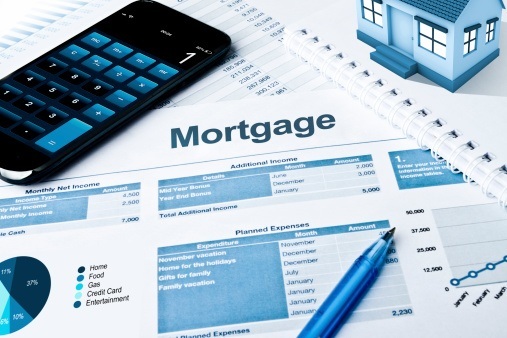Once you've decided to take the plunge and switch from renter to homeowner, your first step should be to research your financing options so that you can decide which loan term best suits your needs.
The Federal Housing Finance Agency reported that 69 percent of purchase home loans in May 2018 were 30-year fixed mortgage rates, popular among both first-time and repeat homebuyers. But before you jump on the 30-year bandwagon, you should understand all the loan-term options available to ensure you're getting the best home loan to suit both your lifestyle and financial needs.
Fixed-rate home loans
Fixed-rate home loans are available in a variety of terms, including 30, 20 and 15 years. Some lenders even offer less-popular 7, 10, 17 or 25-year loan terms.
"Thirty-year fixed-rate mortgages are really the driving force behind homeownership in the U.S. because they offer the lowest monthly payments along with the security of stable payments," says Malcolm Hollensteiner, director of retail sales for TD Bank headquartered in Cherry Hill, N.J., and Portland, Maine.
Gregg Busch, vice president of First Savings Mortgage Corp. in McLean, Va., says there's really no downside to fixed-rate loans because they offer first-time homebuyers a conservative way of paying for a home without the danger of any sticker shock from changing mortgage payments.
While the monthly payments on 30-year mortgages are lower, 20 or 15-year mortgages allows you to pay off the loan faster because of the shorter term and lower mortgage rates. Hollensteiner says the interest-rate spread between a 30-year and 15-year mortgage could be as much as 0.5 percent to 0.75 percent, while the spread between a 20-year and 30-year are usually a little closer.
At today's interest rates and spreads between products, "Your monthly payments will be about 40 percent higher on a 15-year mortgage compared to a 30-year mortgage," says Busch. "If you can afford the higher payments, a shorter loan allows you to build equity much faster."
Monthly payments
Let's consider what the monthly payments would be on a $200,000 mortgage at various fixed-rate terms:
- 30-year mortgage at 4.53 percent: $1,016.94
- 20-year mortgage at 4.38 percent: $1,252.38
- 15-year mortgage at 4.02 percent: $1,481.38
However, due to the shorter term and faster repayment of principal, just five years into the loan, the difference in the loan balance between the 30-year and the 15-year loan is over $36,000 -- and the amount of interest you'll be charged is over $8,300 less with the shorter term loan.
Hollensteiner says most first-time homebuyers choose 30-year terms because they tend to focus more on keeping monthly payments low rather than paying off the loan balance. However, building equity more quickly benefits homeowners who wish to refinance or intend to sell in the near future.
Adjustable-rate mortgages
Most adjustable-rate mortgages (ARMs) available today are Hybrid ARMs with a fixed-rate period of five, seven or 10 years. ARMs have an initial fixed interest rate that is usually much lower than fixed-rate loans. According to the latest interest rate data from Freddie Mac, the interest rate spread between the overall average rate for 30-year fixed-rate mortgages (conforming, non-conforming and jumbo) and 5/1 Hybrid ARMs is about three-quarters of a percentage point.
"If a first-time buyer is not planning to stay in their home longer than the fixed term or is not maxing out their ability to handle their mortgage payments, an ARM might be an option," says Jeff LaMonte, senior vice president for retail sales and business support with Bank of America in Bakersfield, Calif. "If borrowers fully understand the loan and can afford to make the highest possible payments after the loan adjusts, they may be willing to take the risk in order to save on their initial mortgage payments."
Monthly payments
Given the lower interest rates, monthly payments on an ARM are going to be a somewhat less than a 30-year fixed. The monthly payments on a $200,000 mortgage with a 5/1 Hybrid ARM rate of 3.86 percent would be $939 for the first five years and then would adjust each year after.
Of course, the downside of any ARM is that your monthly payments may increase after the fixed-rate period expires. Today, most ARMs have an initial interest rate change limit of 6 percent (and the interest rate can only rise by six percentage points over the life of the loan). In the example above, the interest rate could rise to a maximum of 9.86 percent, increasing the monthly payment by nearly $700. While that large of a move is unlikely to occur, even a smaller increase in market interest rates will cause a rise in the loan's monthly payment.
Now that you understand which mortgage terms are available on the market today, consult with a mortgage lender to discuss your individual financial circumstances and which product is right for you.
(Remember, mortgage rates change daily, so the interest rates used to provide examples in this article may not reflect current rates. Check back in with HSH.com for today’s mortgage rates.) Examples in this article were updated by Keith Gumbinger.



